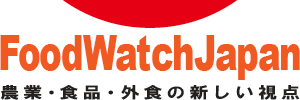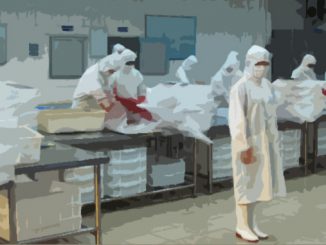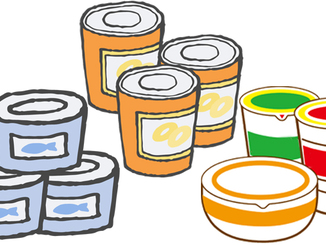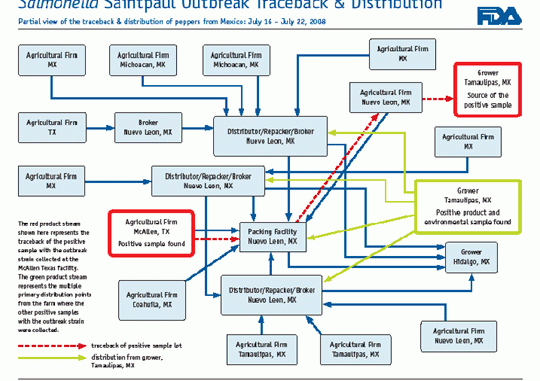
11月下旬、米国食品医薬品局(FDA)が中国の3都市に事務所を開設したとのニュースが流れた。9.11以降、米国政府は食の安全保護強化のためいくつかの対策を取ってきたが、これは最新のものである。米国へ食品を輸出する企業はすべて登録をしなければならいなこと、船荷到着前にFDAに届出しなければならいなこと、輸入時に健康リスクがあると思われる食品を留置する権限、そして新たな記帳義務。こういった新たな規制手段は、食品に関する有害事象に対してFDAの対応能力を高めるものである。とはいえ、さかのぼり調査や食関連事件の解明は、ますます複雑化した世界的食システムを受け入れなければならない保険当局にとって厄介な仕事である。米国は国内で消費される食品のたかだか15%しか輸入していないが、この10年間で輸入量は飛躍的に増えた。輸入食品は、食品由来の病気の唯一の原因ではない。しかし、成長を続ける国々と拡大する世界規模の食の生産・流通システムを鑑みたとき、食料供給の安全を確保するためには追加的対策が必要となろう。
The news in late November that FDA has opened offices in three cities in China is the most recent of several steps taken by the United States (U.S.) government since 9/11 to strengthen food safety protection. New regulatory tools, including registration of all firms that export food products to the U.S. and notification to FDA of all shipments prior to arrival, authority to detain foods that present a health risk at the point of import, and new record keeping requirements, enhance FDA’s ability to respond to adverse events related to food products. Nevertheless, trace back and resolution of food related incidences continue to challenge health authorities who must adopt to an increasingly complex global food system. The U.S. imports only 15 percent of the food consumed, but the number of imports has increased exponentially in the past decade. Imported foods are not the sole source of food-borne illness, but growing economies and an expanding global food production and distribution system suggest that additional measures will be needed to ensure protection of the food supply.
通常、食関連の公衆衛生事件の第一報は、消費者の健康被害に関して地域の医師や病院から州保健当局や米国疾病対策予防センター(CDC)あるいはFDAにもたらされる。2008年5月末頃に起こったケースだが、CDCがFDAにニューメキシコ州とテキサス州で発生した、サルモネラ菌株の1つで通常は食中毒とはあまり関係のないサルモネラ・セントポールに関連した疾病ついて通知を出した。CDCから送られてきた疫学データは、特定の種類のトマトが感染の原因ではないかと示唆していた。FDAは食中毒発生の原因を探る調査を始めた。米国ではトマトは、大小、国内外の多くの農家からやってくる。多くの食品と同様、原因となる生産品を特定するのは骨の折れる仕事である。調査によりフロリダ州とメキシコの農家が浮かび上がったが、トマトからセントポール菌株は検出されなかった。調査員は、ほかの食品がからんでいるのではないかと考えざるを得なかった。
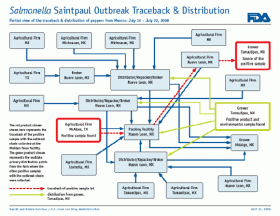
調査は、多くの検査官の労力と多くの研究所による大量のサンプル分析を要する。調査が続くときの常で、その安全でない食品によって健康被害を受ける人々が次々に現れる。このケースの場合、CDCと州保健当局による新たなデータ分析もトマトが原因ではないかという可能性を示していたが、この時、ハラペーニョやセラーノという青トウガラシも名が上がっていた。7月21日、サルモネラ・セントポール陽性のサンプルがテキサス州のある販売業者の扱う青トウガラシから見つかった。追跡調査の結果、7月31日、メキシコの農場から陽性サンプルが検出された。図は、FDAのホームページに公開されている青トウガラシ追跡捜査の模様の一部である。図は、捜査線上に浮かんだ多くの農場や販売業者とサルモネラ・セントポールが見つかった施設を示している。その図はまた、食関連追跡調査がいかに複雑なものであるかも明示している。08年のサルモネラ・セントポールの発生は、征圧までに米国43州と首都ワシントンDCに1450件以上の被害をもたらした。
例えばトマトの生産者などは、疫学データによって関係するのではないかとされたが、件の微生物が確認されないまま特定の種類のトマトを避けるよう伝えたFDAの消費者に向けた早期警告に批判的である。確定的ではないがしかし原因を暗示するデータに対し、消費者を守るため規制当局はどう対応すべきか。これは調査の早期段階においてしばしば言えることだ。健康を守ることを責務とする規制機関の立場からすると道理に合った行動方針はただ1つ、被害の拡大を防ぐためその時点で分かっている事実を人々に伝えること。発生菌株がついに青トウガラシから見つかった時、FDAは消費者向け警報を修正し、人々にもうトマトを食べても大丈夫であると伝えた。
9.11以降、FDAの権限は強化された。また予防対策に重点を置く食品保護策がとられているが、セントポールの事例は食中毒の発生を解明するのがいかに大変かを物語る。特に青果物がからんだものはなおいっそうだ。9.11以前、食品の製造業者や販売業者に原料や製品の仕入先や販売先を記録する義務はなかった。とはいえ現実には多くの企業はそうしていたのだが。さらに、誰が食品を製造し、誰が米国に輸出しているかをFDAが常に把握していたわけではない。9.11後、すぐにその状況は変わった。
米国議会は2002年バイオテロ法を可決し、食料供給を保護するという新たな権限をFDAに与えた。その新たな権限は、長い歴史のある連邦食品・医薬品・化粧品法に追加された。企業に次のことが義務付けられた:(1)米国内で食品を生産する企業あるいは米国に食品を輸入する企業はFDAに登録しなければならない、(2)米国に食品を出荷する際、事前にFDAに届け出ること、(3)原材料の仕入先を証明する記録及び最終製品の販売先の記録の保管――いわゆる「one up-one down」制度。またFDAによる査察の認可、(4)健康問題の証拠を示す食品をFDAが留置することを認めること。
FDAの新たな要求を受け入れるのは、世界中の企業にとってそうたやすいことではなかった。当初その要件について相当な混乱があった。従うために企業は何をどうしなければならないのか、日本では、米国にいる親戚や友人に食品を送れるのかどうか一般の人々からの問い合わせが郵便局に殺到した。要求事項実施に当たってプレッシャー下にあったFDAは、企業や消費者の問い合わせに何とか答えを用意しようと奮闘したのであった。現在、その制度はうまく動いているようだ。しかし、政府にとって政策決定事項についての情報を事実に基づき、分かりやすく、タイムリーに提供するのがいかに難しいことであるか、この経験は物語る。
FDAは食料供給を護るべく、与えられた既存の権限の中で、常に新しい方策を見出そうとしている。FDAは今、企業責任を増やし、予防策への理解と実施を促し、フードシステム上の「汚染信号」を検知する能力を高め、そして公教育を改善しようと努めている。
法的な分野では、米国議会に強制的にリコールする権限をFDAに与えてほしいと望んでいる。近頃、FDAはある企業に安全でないと思われる、あるいは誤表示があったと思われる一製品の回収を要請した。企業は普通、FDAの要請に従ってくれる。実際、企業はある食品が安全でないと気付き回収を始めたということをFDAに知らせてくる。しかし、FDAは、危害の恐れがあるという確かな証拠があり回収を強制できるなら、それは人々のためになると信じているのだ。FDAはまた、テロリストや犯罪者による国際的な汚染に対して予防的に対処するための権限の強化を求めている。それは、繰り返し起こされる深刻な健康被害をもたらす高リスク食品を念頭においている。
食の生産と流通システムは、すでにグローバルなものである。それを考えると、食料供給を護ることは、自国だけで成し遂げられるものではない。FDAは中国に事務所を開設した。そのほか数カ国・地域にも同様の事務所を開設するようだ。今後の食の安全性のために不可欠なこと、それは食品安全基準に関して国際的なコミュニケーションを改善することと、そして啓蒙である。またそれらは消費者の信頼を維持するためにも必要なのである。
本稿を執筆するに当たり、FDA食品担当副局長Dr. David Achesonに寛大な支援と情報を提供していただいたことに感謝する。このコラムで語られている見解やまた誤りがあるとすればそれはすべて筆者によるものである。このコラムの内容に関する詳細は、FDAの食品分野ホームページを参照されたい。
Usually the first indication of a new food-related public health incident is reports of consumer illness by local doctors or hospitals to State health authorities, to the CDC (Centers for Disease Control & Prevention), or to the FDA. This was the case in late May, 2008, when CDC notified FDA of illnesses in New Mexico and Texas associated with Salmonella Saint Paul, a strain of Salmonella not usually associated with food-borne outbreaks. The epidemiological data from CDC suggested certain types of tomatoes might be the source of infection. FDA initiated an investigation to trace the source of the outbreak. In the U.S., tomatoes originate from many farms both large and small and from in and outside the country, and as is the case with many foods, it can be a challenge to identify the causative product. The investigation led to tomato farms in Florida and Mexico. Still the Saint Paul strain was not found in the tomatoes, and investigators had to consider whether other foods may be involved.
Investigations require the work of many inspectors and analyses of a large number of samples by many laboratories. As is often the case as an investigation continues, individuals continue to become ill as a result of the unsafe food. In this instance, analyses of new data developed by CDC and State health authorities continued to suggest that tomatoes were a potential vehicle but also implicated Jalapeno and Serrano peppers. On July 21 samples positive for Salmonella Saint Paul were found in peppers at a distributor in Texas and traced back to Mexico where on July 31 positive samples were found on a farm. A portion of the investigation of peppers is shown in the attached figure from the FDA home page. The figure shows a number of farms and distributors that were part of the investigation and the facilities where Salmonella Saint Paul was found. The figure illustrates some of the complexity of a food-related trace back investigation. The 2008 Salmonella Saint Paul outbreak resulted in over 1450 cases in 43 States and the District of Columbia, the Nation’s Capitol, before it was contained.
Some ?for example growers of tomatoes- have been critical of FDA’s early warning to consumers to avoid certain tomatoes that were implicated by epidemiological data but not confirmed to contain the suspect microorganism. How should a regulatory respond in the case of inconclusive, but suggestive data to protect consumers? This is often the case in early stages of an investigation. From the view point of a regulatory agency charged with protecting health, there was only one reasonable course of action and that was to inform the public of the facts that were known at the time to prevent further illness. When the outbreak strain was finally found in peppers, FDA revised its alert to consumers, and advised the public that tomatoes could be safely consumed once again.
In spite of the strengthened authorities FDA has had since 9/11 and a Food Protection Program that emphasizes preventative measures, the Saint Paul episode shows how difficult it can be to resolve a food-borne outbreak, especially one that involves fresh produce. Prior to 9/11, food producers and distributors were not required to keep records related to the sources of supplies or points to which products were sent, though many did. Further, FDA did not always know who was producing food or exporting food to the U.S. That changed soon after 9/11 when the U.S.
Congress passed the “Bioterrorism” Act of 2002 giving FDA new authority to protect the food supply. The new authority supplements the long-established Federal Food, Drug, and Cosmetic Act by requiring firms (1) to register with FDA to produce food in the U.S. or to import food into the U.S., (2) to notify FDA prior to shipping food to the U.S., (3) to maintain (and permit inspection by FDA) records that establish the source of raw materials and the source of sales of finished food products ? a “one up-one down” system, and (4) allows FDA to detain food products that present evidence of a health problem.
was not easy for companies around the world to adopt FDA’s new requirements. Initially there was much confusion about the requirements and what firms needed to do to comply with them. Even consumers inundated post offices in Japan with questions about FDA’s requirements. Would they be able to send food items to relatives and friends in the U.S.? FDA under pressure to implement the new requirements struggled to provide answers to industry and consumer questions, and today the system is working well, but the experience illustrates how difficult it can be for a government to provide factual, easily understood, and timely information about its decisions.
FDA continually explores new ways under its existing authority to strengthen protection of the food supply. The FDA is working to increase corporate responsibility, expand the understanding and use of preventive measures, improve detection of food system “signals” that indicate contamination, and improve public education.
On the legislative front, FDA would like the Congress to grant the agency mandatory recall authority. Currently, FDA can request a firm to recall a food product that is believed to be unsafe or mislabeled, and firms usually comply when FDA makes a request. In fact, often firms notify FDA that they have initiated a recall when they become aware that a food product is unsafe. Nevertheless, FDA believes the public would be well served if the agency could mandate a recall based on credible evidence of potential harm. FDA also seeks enhanced authority for preventive controls against intentional contamination by terrorists or criminals focusing on high risk foods associated with repeated episodes of serious health consequences.
The global nature of the food production and distribution system means that no nation can adequately protect its food supply on its own initiative. FDA has opened offices in China and foresees opening similar offices in several countries and regions. Improved communication and education regarding food safety standards among countries will be essential to the future safety of foods and necessary to maintain consumer confidence.
Acknowledgement: The author appreciates the generous assistance and information provided by Dr. David Acheson, FDA Associate Commissioner for Foods. The views expressed and any errors in the text are solely the responsibility of the author. More information can be found on FDA food homepage.
※このコラムは「FoodScience」(日経BP社)で発表され、同サイト閉鎖後に筆者の了解を得て「FoodWatchJapan」で無償公開しているものです。
